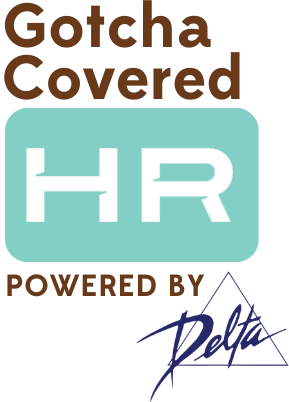Does high-turnover distract you from running your business? Even if it doesn’t, how do you plan on retaining high performing employees in 2019? These are questions that are essential for running a successful business. These are also questions that have actionable, practical solutions that can help you manage your turnover and retention issues as well as improve performance. Yes, it is possible, and I will tell you how.
How to avoid high turnover
If you are like many of the small business owners we support, you may be struggling to find and keep high performing workers, which is critical to business outcomes like sales, customer service, EBITDA and Safety.
For some companies, turnover is like a revolving door that never stops with one leaving and another arriving in a never-ending churn of employees. It can be consuming and quickly becomes a growing distraction from running your business. There are many reasons people leave their employer, and it even varies by industry. Typical causes include hiring the wrong person for the job, untrained and or incapable leaders, pay, benefits, commute and location, poor onboarding practices, and the list goes on.
Even if turnover is not an issue for you, staffing your organization in 2019 won’t get any easier unless you acknowledge and plan solutions for workforce trends. These trends have been confirmed now for years by leading research firms.

- According to research, only 3 out of 10 employees in a given company are actively engaged in their work and providing discretionary effort. If the other 7 are not on deck, they must be down below?
- Research indicates that 5 out of 10 employees in a given company are actively looking for a new job or watching for openings. What if they all “jumped ship” at the same time?
- Additionally, 1 in 10 employees in a given company is fully disengaged—actively opposed to something or someone in their organization. That’s like having a stowaway onboard who will never be on deck!
Research also indicates a growing trend where employees focus more on their work environment, look for meaning in their job, and want immediate advancement opportunities.
As a small business owner, you know that immediate advancement is a tough expectation to match.
Turnover Reduces Profit
There are many legitimate methods of accurately determining the cost of employee separation. Did you know that a separation costs at least 20% of the annual salary, and yet it is not reflected in your financial statements?


Do you know your turnover rate and the costs?
Due to technology, today’s job seeker knows all about your company, what past and current employees say about you, and how to answer the interview questions you are likely to ask.
Are you confident your processes will select the right person for the job?
What’s that old saying, “unless things change, they are likely to remain the same!”
What You Really Need Is…
The purpose of today’s article is to advise small business owners that your annual business goals should include developing a sound retention strategy. Some of the components of that strategy should include:
- Exploring the reasons people both stay and go through data collection and analysis, surveys, interviews, and investigation.
- Predict which employees if any are likely to leave within six months, one year or greater than one year and determine what issues are important to each, e.g., pay, benefits, commute, relationship with supervisor, etc.
- Assessing possible causes and determining whether the organization can realistically influence the issue.
- Developing an action plan that will be effective and align with business strategy.
I want to assure you that there are practical solutions that can help you manage turnover and retention issues as well as improve performance and I am going to give them to you through a series of articles just like this one. But first, let me tell you a story.
One of my former clients had a workforce of more than 100 employees, and their business was to secure service contracts within their industry. Each contract required a crew of at least five qualified employees at varying skill levels including a lead operator. Unfortunately, they had a turnover rate of more than 35%per year, which often required them to pass up a bid offer because they couldn’t meet the staffing requirements. A majority of their turnover occurred within the first two years and much of it within the first 90 days. It was rare for them to get an employee past the two-year mark, so they were continually searching for lead operators. Their long-standing assumption was that their wages just weren’t competitive so there was nothing they could do about it. Fortunately, they agreed to work with me to consider a new approach.
Our approach was a three-step process:
- Work on understanding employee engagement and identify practical solutions that first-line leaders could implement to improve retention and performance.
- Set a goal to improve annual turnover by 20% of the previous year’s rate. Improve the 90-day turnover rate by 30% and build those goals into their annual bonus payout scorecard.
- Provide support to the first line supervisors in implementing four primary solutions within their control.
After two years of hard work, the turnover rate was down to 18%. They maintained a steady supply of lead operators and they were making more money because they were confidently able to bid on more jobs.
Does that sound like a solution you’re looking for? Lower turnover, higher performing employees, and higher revenue. End of story.
The First Thing You Need to Understand
Let’s look at the first bullet point above which can be boiled down to understanding employee engagement. There are many expert definitions by reputable organizations, and I respect all of them. However, I began my career as a roustabout and eventually became a first line supervisor of hourly and professionals. Due to that hands-on experience, I relate to and prefer the definition of and research on employee engagement conducted for more than two decades by the Corporate Leadership Council.
“The extent to which employees commit both rationally and emotionally to something or someone in your organization, how hard they work and how long they stay as a result of that commitment.”
So each of us has both of these psychological components within us. I like to refer to them as the “Scarecrow” and “Tin Man”. Yes, that’s showing my age and that I grew up watching the Wizard of Oz!, but work with me here.
Our rational commitment tends to be driven by three focal points The Team, the Manager and the Organization, while our emotional commitment is driven by the same three plus the Job itself. How long one stays with a company is a balance of both rational and emotional commitment, but how hard one works is driven more by emotional connection. My HR peers often use the phrase “winning the hearts and minds” of your employees.
- Employee engagement is a characteristic not of groups but of individual people to be won or lost, improved or diminished, by their organization.
- Those employees who are most committed perform 20% better and are 87% less likely to leave the organization—indicating the significance of engagement to organizational performance.
- While employees’ commitment to their first-line leader is crucial to engagement, she/he is most important as the enabler of employees’ commitment to their jobs, organizations, and teams.
- By increasing employees’ engagement level, employers can expect to improve performance up to 20 percentile points and an 87 percent reduction in an employees’ probability of departure. Some leader-led actions can achieve even higher levels.
Turnover is a reality in any business with some of it being outside of your control.
However, developing and implementing a plan with proven leader-led initiatives can put retention and performance improvement mostly within your control. If your company is similar to the only 3 out of 10 are actively engaged, imagine your opportunities by engaging just two more employees to be “on deck.”
Your First Engagement Initiative
So how do we do it? Let me offer you my first engagement initiative. Before I do, there is a critical fact that has to be accepted. The first-line leader drives retention and performance improvement. She/he is going to have to share that ownership with you and be open to change.
Retention and Performance improvement initiative #1
Increase the frequency of informal feedback and ensure that it is perceived by the employee as fair and accurate. Informal feedback is ongoing in-the-moment development advice given to the employee by the first-line leader outside of the formal review process. Everything the first-line leader does affect an employee’s engagement to some degree.
Research has shown that when the feedback is voluntary, timely, and structured in a way that helps the employee do their job better, it can improve their performance by more than 35%.
Your Work, Your Results
After years of research, we now have a full understanding of employee engagement and how to influence it. It really is about winning the hearts and minds.
I’ll continue to share my learnings, experiences, and methods for tackling turnover and retention, but keep in mind the amount of work you put into this directly impacts your results.
If you put in the work, you’ll get the results.
If it all feels a little overwhelming, that’s because it is. If you need some extra guidance, I will go the extra mile for you. Fill out the form below to sign up for a free 15-minute phone call with me. There are limited time slots, so sign-up now.
I look forward to talking and connecting with you. Good luck!








